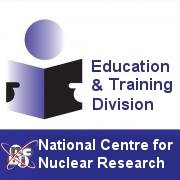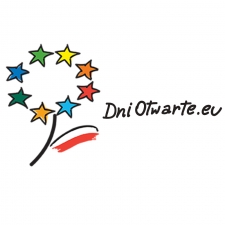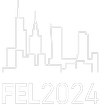Science for technology, medicine and environment protection
2016.05.10 13:07 - admin
Within the framework of the 3rd Open Days of European Funds all interested in cooperation with/offer of NCBJ are invited to come to Świerk on Friday, May 13, 2016. Five groups each of 25 visitors will be admitted at 10 am, 11 am, 12 am, 1 pm, and 2 pm. Each tour will take approximately 1.5 hour to complete. Each prospective visitor must fill up registration form and supply his/her personal data by an e-mail (see the form for instructions). Free-of-charge bus transport between Otwock railway station and Świerk Research Centre will be provided. An unattended parking for private cars will be available next to the Centre entrance gate.
NCBJ scientists will familiarise visitors with projects accomplished within the framework of the 2007-2013 Regional Operational Programme for the Mazovia Voivodeship. About 76 million PLN-worth assistance from that Programme helped to develop Świerk Science & Technology Park, to modernize Świerk infrastructure, to purchase some state-of-the-art research apparatus, and to develop in NCBJ some ionizing radiation-based technologies.
Mission of Świerk Science & Technology Park is to help implement results obtained in Hi-Tech research to national economy. In particular, it is hoped that the Park will gradually become a local centre of knowledge-based economy in the Otwock county region. The Park is a member of the New Technologies Otwock Cluster; other members of the cluster include Polish Academy of Sciences Institute of High Pressure Physics, the Alcide De Gasperi University of Euroregional Economy in Józefów. Park mission will be flexibly adopted to circumstances, however its key functions shall remain associated with development of nuclear techniques and their applications in industry, medicine, power generation, environment protection, biology, material engineering. The Park offers comprehensive consulting and legal assistance helping start-up entrepreneurs to commercialize their innovative ideas by providing them with the de minimis-type assistance all the way from the earliest phase of implementing their ideas to running their businesses.
Park Labs offer
Eight labs currently located within the Świerk Science & Technology Park building include:
- Radiation-resistant electronics lab (radiation-hardened electronic circuits)
- Microchip radiography lab (industrial tomography/radiography, tested object diameter between 400 nm and 500 mm)
- 3D printing lab (capable to print metals including steel, bronze, gold, titanium alloys, which is useful in medical applications)
- MEMS lab (testing of micro-electronic systems)
- ISO 8 class clean room
- Nanomechanical tests lab (measurements may be conducted in a controlled atmosphere at temperatures ranging from 15°C to 750°C)
- Radiation modification of materials lab (implantation of ions into surface layers of various rubbers, ceramics, metals)
- Aging tests lab (climatic chamber for temperature/humidity-resistance tests, vibration-resistance tests)
Accelerators for research and economy
Recently modernized Accelerating Structure Lab occupies 1,400 sqm of area in a building newly developed in Świerk. The Lab employees around 50 highly skilled specialists in electronics, mechanical engineering, microwaves, computer sciences. The employed Hi-technologies include vacuum processing and vacuum brazing. Many among the installed advanced high-class instruments indispensable to test new solutions for particle acceleration operate in an increased cleanliness regime.
The Lab’s primary mission is to develop key components for electron accelerators, which find many practical applications in such national economy fields as medicine (radiotherapy of cancer), industry (radiography of large structural objects), border security (scanners of imported cargo). The Lab conducts also research in accelerator physics.
The Lab is currently developing an electron accelerator for the GBAR experiment to be run in CERN. Project’s objective is to directly measure gravitational properties of antimatter by means of observations of free fall of anti-hydrogen atoms. Antiprotons – on of the two components necessary to form anti-hydrogen atoms – will be produced by CERN accelerators, while the other components, positrons, will be produced using just the accelerator ordered in NCBJ Accelerating Structure Lab.
Monitoring of air quality / atmosphere contamination
Long periods when levels of particulate matter in the atmosphere are clearly exceeded may bring about negative consequences for health of inhabitants of the polluted area. Mobile air quality monitoring lab with its state-of-the-art equipment is an unique in Poland vehicle capable to conduct precise evaluation of air quality at any destination. Modern analyzers installed in the lab are capable to continually monitor concentration of NOx, CO, and ozone. However, fully automated measurements of particulate matter in the air are the lab’s specialty. Lab equipment is capable to determine both concentration and composition of the matter, including the most dangerous for human health particles of diameters a few hundred times lower than human hair diameter.
Possible applications of hot plasma
Scientists employed in Ion & Plasma Beam Lab generally work on harnessing of plasmas. They try to find applications of plasmas in various industrial processes, in particular to material engineering. Plasma gun is capable to modify material surface in a fraction of a second. Beam energy is typically sufficient to melt down the irradiated material as deep as 1 micrometer below its surface. The molten layer may be bombarded with ions of various elements. Once the plasma pulse is over, the doped material re-crystallizes.
Diameter of the beam produced by electron gun operated in the Ion & Plasma Beam Lab is about 10 cm. The gun cooperates with a high-current pulse implanter. The facility is equipped with diagnostic apparatus capable to control beam homogeneity, energy density and other key process parameters. The processed samples may be analysed using an in-house scanning microscope equipped with a microprobe (elemental analysis, 3D surface images).
Some new opportunities have been opened after conclusion of the 4LABy project. They include research on acceleration of charged particles in hot plasma, production of high-temperature corrosion-resistant surface layers on steels, production of new semiconductors for spintronic and/or photovoltaic applications.
More info:
NCBJ spokesman
phone +48 512 583 695


















